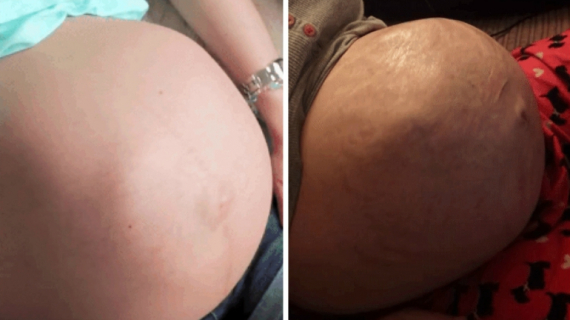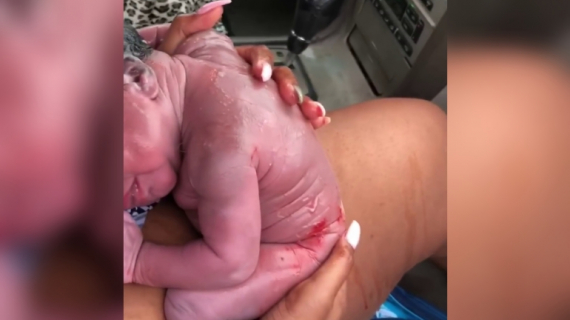How to Breastfeed: Most Common Latching Techniques
Your baby has instincts and reflexes that help him to latch onto your breast and feed. You also have instincts for helping your baby to breastfeed. Even so, sometimes breastfeeding can be difficult in the beginning. The following suggestions may help you and your baby to breastfeed more easily and comfortably.
Most common techniques for latching on:
Bulls-eye latch: This is one of the oldest methods for latching on. This is most likely the technique you were taught in the hospital. This technique works best with the cradle hold. With this method, you hold your breast with your free hand and tickle your baby’s lip with your nipple. When your baby feels your nipple on her mouth, she will open up her mouth instinctively. Wait until she opens her mouth wide and then attempt latching on.
When her mouth is opened wide, position your nipple towards the center of her mouth and quickly pull her in towards you using the arm that is supporting her head. You want to get as much of the areola into her mouth as possible. Make sure she gets plenty of areola in her mouth. She will not be able to remove as much milk from your breast if she is only sucking on the nipple. And, this type of shallow latch often results in nipple soreness.
Asymmetric latch: The asymmetric latch is similar to the bulls-eye latch, but instead of trying to get baby centered onto the nipple, baby is latched slightly off-centered. With this method baby gets more breast tissue close to her lower jaw and tongue. If you look at the diagram you will see that instead of getting some areola tissue above the nipple and some areola tissue below the nipple, she is getting a lot more of the breast tissue below the nipple in contact with her lower jaw. By having more tissue contacting your baby’s tongue and lower jaw, baby is better able to remove milk. This latch may also feel more comfortable for mom.
It’s easiest to use the cross-cradle hold when using the asymmetric latch. Tickle your baby’s lip with your nipple, like you would with the bulls-eye latch, and wait for her to open wide. When she opens wide, aim her mouth just below your nipple, so that her lower lip and chin are lined up a little below your nipple. Your goal is for her to connect with your areola first and then the nipple. When she gets the areola into her mouth, quickly bring her mouth over the nipple so that she has both the areola and the nipple in her mouth.
Nipple Sandwich technique: To help your baby get more of the breast tissue into her mouth you can try the nipple sandwich technique. When your baby tries to latch onto your breast, she may have a hard time getting enough tissue in her mouth. If you think of your breast like a thick submarine sandwich, it’s easy to understand why. When you hold onto a sandwich to take a bite, what do you do? You squish it so the bread fits into your mouth. You don’t just try to bite into it. This is the rationale of the nipple sandwich technique. Think about the position of your baby’s mouth when she “takes a bite” of the nipple sandwich. You want your breast to be compressed (vertically if she’s lying across your lap or horizontally if you’re using the football hold) so that when she latches on, she doesn’t have to work so hard to get it all in her mouth.
Sit or lean back in a comfortable position. Put a water soluble lubricant on your thumbs and perineum. Place your thumbs 1 to 1.5 inches inside your vagina. Press downward toward the rectum and to the sides until you feel a slight burning, stinging, or tingling sensation. Hold the pressure for two minutes until the area becomes numb. Breathe deeply and concentrate on relaxing the muscles.
As you continue to press down with your thumbs, slowly and gently massage back and forth over the sides of your vagina in a U movement for three minutes. Relax and repeat the process once.














